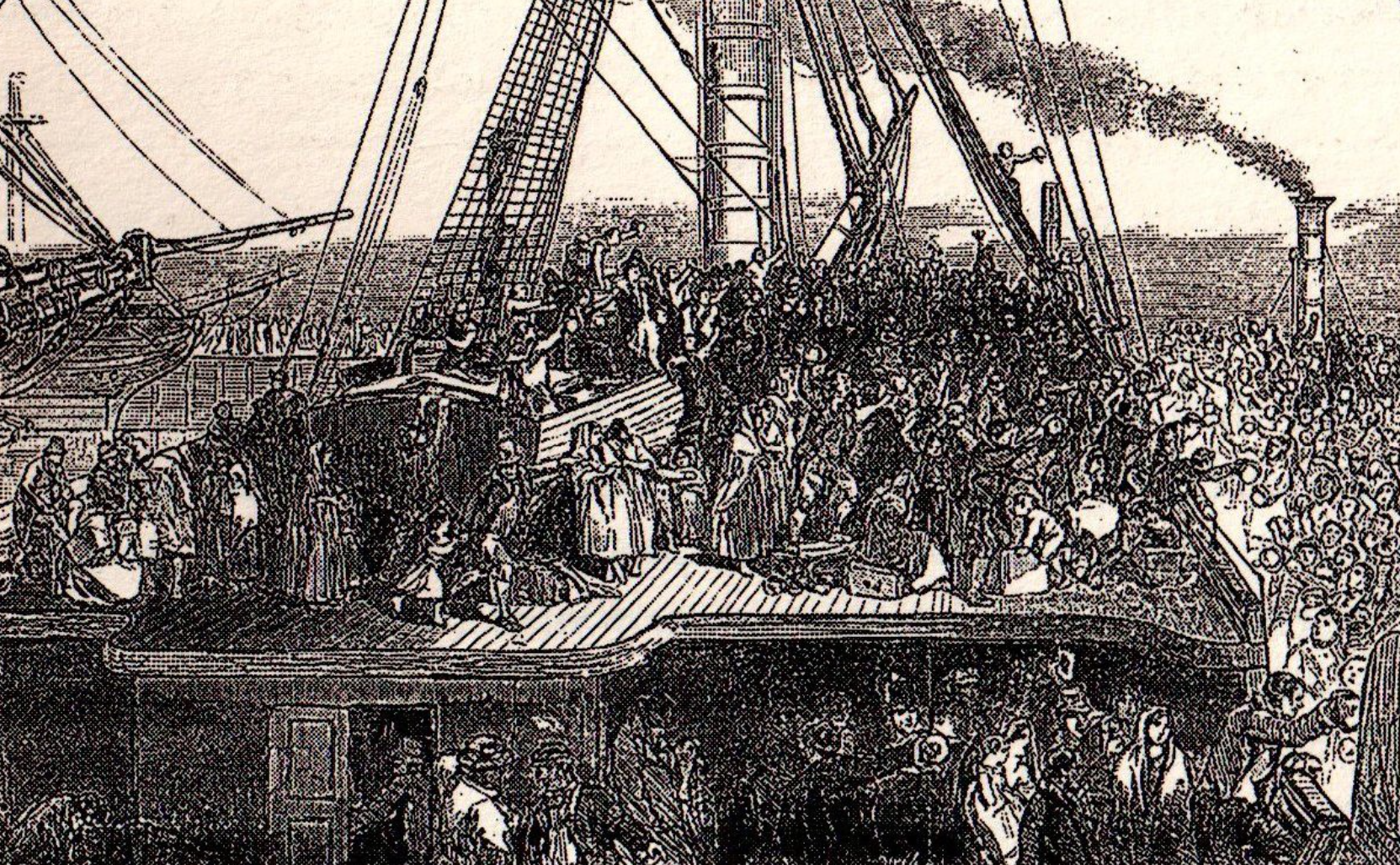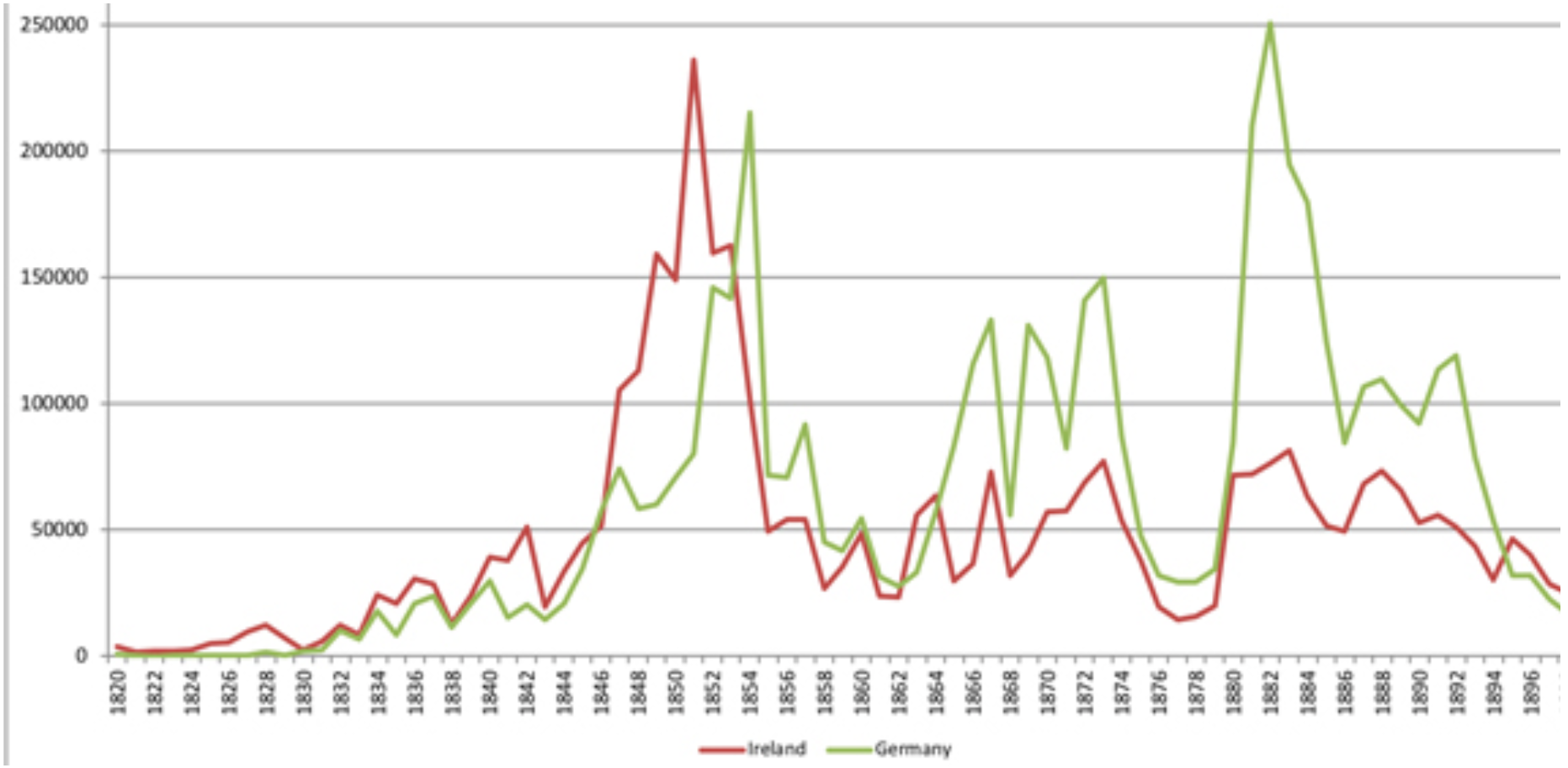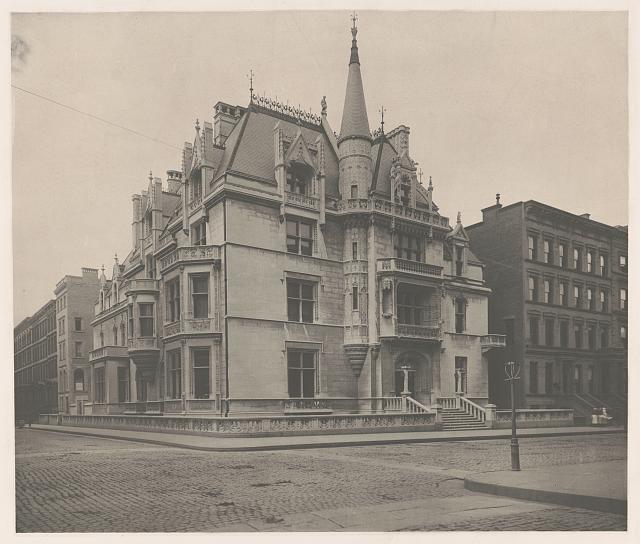
Background
The Irish Potato Famine
“A TOTAL of 41,502 aliens were admitted and 14,860 departed in November, 1925.”
~ Statistics of Immigration for November, J. J. Kunna, 1925
The Irish Potato Famine was one of the main factors for the massive increase in immigration. Relying heavily on potatoes, the Irish people were devastated by a countrywide potato famine. An estimated quarter of their population were forced to move to the United States.
“Everyone that is going to America is going this year as there is no prospect of [anything] here but poverty and distress.”
~ Letter from Hannah Curtis to John Curtis, April 21, 1847

The Departure, 1850. An illustration of a dock in Ireland during this time. People were eager to escape starvation and start anew in America.
The Gilded Age

German Historical Institute, 2018. The number of immigrants moving to the United States from the 1820 to 1896. Immigration skyrocketed during Potato Famine and Gilded Age.
The first Industrial Revolution caused a surge in industrialization which urbanized America. This produced an abundance of economic opportunities which attracted many immigrants from Europe. Like the many that came before them however, conditions were unfavorable for their settlement.
The Industrial Revolution had also enabled the mass production of goods, which allowed companies to monopolize industries and hoard wealth. This widened pre-existing class inequalities and caused further widespread poverty.
On one side of the wealth gap were families like the Vanderbilts and Rockefellers who owned around a third of the nation’s wealth while nearly half the nation’s population owned around nothing.
These families would construct numerous elaborate mansions for the sole purpose of demonstrating their excessive wealth and affluence.

William K. and Alva S. Vanderbilt mansion, 660 Fifth Avenue, New York City. ca. 1885. This photograph depicts the Wlliam K. Vanderbilt house, located less than 4 miles away from the tenements.